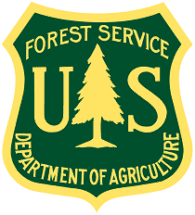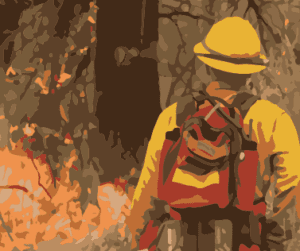Webinar
In 2024, there were five Thursdays in February. To celebrate this rare event, the Fire Lab is hosting a series of five seminars that highlight new tools and research for managers. The “February Five” will occur during our regularly scheduled seminar series timeslot – Thursdays at 11am Mountain Time. Please join us on Teams. Select the titles below for connection information and to view recordings after the event.
FastFuels and QUIC-Fire: 3D fuel and fire modeling systems supporting prescribed fire
Feb 1, 2024: Russell Parsons, Research Ecologist
The Fire Weather Alert System
Feb 8, 2024: Jason Forthofer, Research Mechanical Engineer; Natalie Wagenbrenner, Research Meteorologist
Estimating forest characteristics such as carbon and tree growth over space and time using TreeMap, FIADB, and FVS
Feb 15, 2024: Karin Riley, Research Ecologist and John Shaw, Forest Inventory and Analysis
Behave7 Fire Modeling System: A Long Time Coming
Feb 22, 2024: Faith Ann Heinsch, Physical Scientist; LaWen Hollingsworth, Fire Behavior Specialist; Greg Dillon, Director, Fire Modeling Institute
Wildfire risk and mitigation opportunities in the US sagebrush biome
Feb 29, 2024: Karen Short, Research Ecologist
Webinar recording.
In this LANDFIRE Office Hour, USFS Ecologist Sarah Anderson discusses the behind the scenes operations of the Terrestrial Condition Assessment (TCA). She explains the model design and indicators that drive the TCA assessment results. She also discusses the role of management activities in the calculation of TCA key performance indicators.
Find Sarah’s Office Hour from 2023 here: https://youtu.be/Kf0P3cAq1rs
Webinar recording.
Introduction – Vicky Erickson
An updated approach to generalized seed transfer strategies – Elizabeth Milano
Managing for genetic resistance to white pine blister rust – Anna Schoettle
Restoring ash: Breeding for resistance to the emerald ash borer – Jennifer Koch
Facilitator: Cherie Fisher
Webinar recording.
The complex interactions between atmospheric and fire-induced winds are a persistent obstacle to accurately predicting wildfire front behavior. There are a multitude of wildfire spread models, with one primary distinction being the level of fire-atmosphere coupling in each. Coupling of fire-induced winds and ambient winds in numerical models is carried out through linking the heat and mass fluxes from the wildfire with the surface energy fluxes in the atmospheric model. The challenge in this coupling is increased with the introduction of heterogenous surface conditions, e.g., terrain, canopies, buildings. To better understand the dynamic coupling of fire-induced winds and atmospheric winds at microscales, the fast-response wildfire model QES-Fire was used to study the effects of fire-induced winds near structures, and the relative importance of the momentum deficits caused by canopies and structures on fire-induced winds.
Webinar recording.
Topic: Firefighter Exposures and Efficacy of Interventions
Presenter: Paul White
Delve into the unique health exposures faced by firefighters and learn about the current state of research on the effectiveness of interventions to mitigate exposure. Paul White will share valuable insights into improving occupational safety and health outcomes for firefighters.
Webinar recording.
Topic: Resiliency and Residual in Mission Critical Roles
Join Preston Cline as he discusses the importance of protecting your mental health and building resilience when working in mission critical roles, especially during challenging situations like wildland fires.
Webinar recording.
Land management-focused panel discussion hosted by the USDA Forest Service Rocky Mountain Research Station.
Join us for a live virtual panel session with social scientists and communicators in a conversation about public perceptions and social acceptance associated with Wildfire Crisis planning and implementation. This facilitated panel discussion will be guided by your questions.
Webinar recording.
We conducted a natural range of variation (NRV) assessment of montane conifer forests in the Transverse and Peninsular Mountain Ranges of southern California. Using current and historical literature and data, we present a quantitative analysis of forest function, structure, composition, and ecological processes prior to Euro-American settlement and compare those elements to the forests of today. We highlight how grazing, logging and fire suppression have altered natural fire regimes and examine how departure from NRV conditions may inform forest management in the era of climate change.
Webinar recording.
SCIENCEx will resume in 2024 with SCIENCEx Genetics!
January 29th – February 2nd, 2024
The Southwest Climate Adaptation Science Center, USDA Forest Service, and many other organizations are hosting a yearlong series of workshops and webinars to advance wildlife management relating to fire in the Southwest. This series will kick off with a two-part virtual workshop that will highlight case studies, emerging research, and more.
Day and time: January 23 @ 1-4 p.m. MST and January 24 @ 9-12 p.m. MST
To learn more and register, visit https://www.surveymonkey.com/r/3V7DW6Q.







